The TECHNE workshop of the 6th week was an exciting opportunity for 3DPA students to dive into the interaction between mass and lightness in earth-based construction.
Traditionally, when we think of buildings made from earth, we imagine thick, heavy walls that don’t let much light through. With the introduction of 3D printing technologies, combined with digital design workflow and flexibility, we now have the capacity to dream big and create walls that not only stand strong but also let light flow through them.
In this blog post, 3DPA students will take you on their exciting one-week workshop to explore light and visual porosity in earth wall design.
Showcase Panel – Groups Catalogs
- Catalog 1 : Exploring lightsBounces in 2d – Fixed Grids and Variable geometries
In Catalog 1, our mission was to design a wall that allowed for maximum indirect light to shine through while minimizing direct light. Each of the four groups took on the challenge of creating and evaluating six different geometries.
We infuse our designs with porosity, strategically directing light to create indirect illumination. To achieve this, we simulate three light bounces considering just one position for diffusing light – parallel to the wall. To simplify the process of light analysis in our design, we based our studies on 2D section analysis.
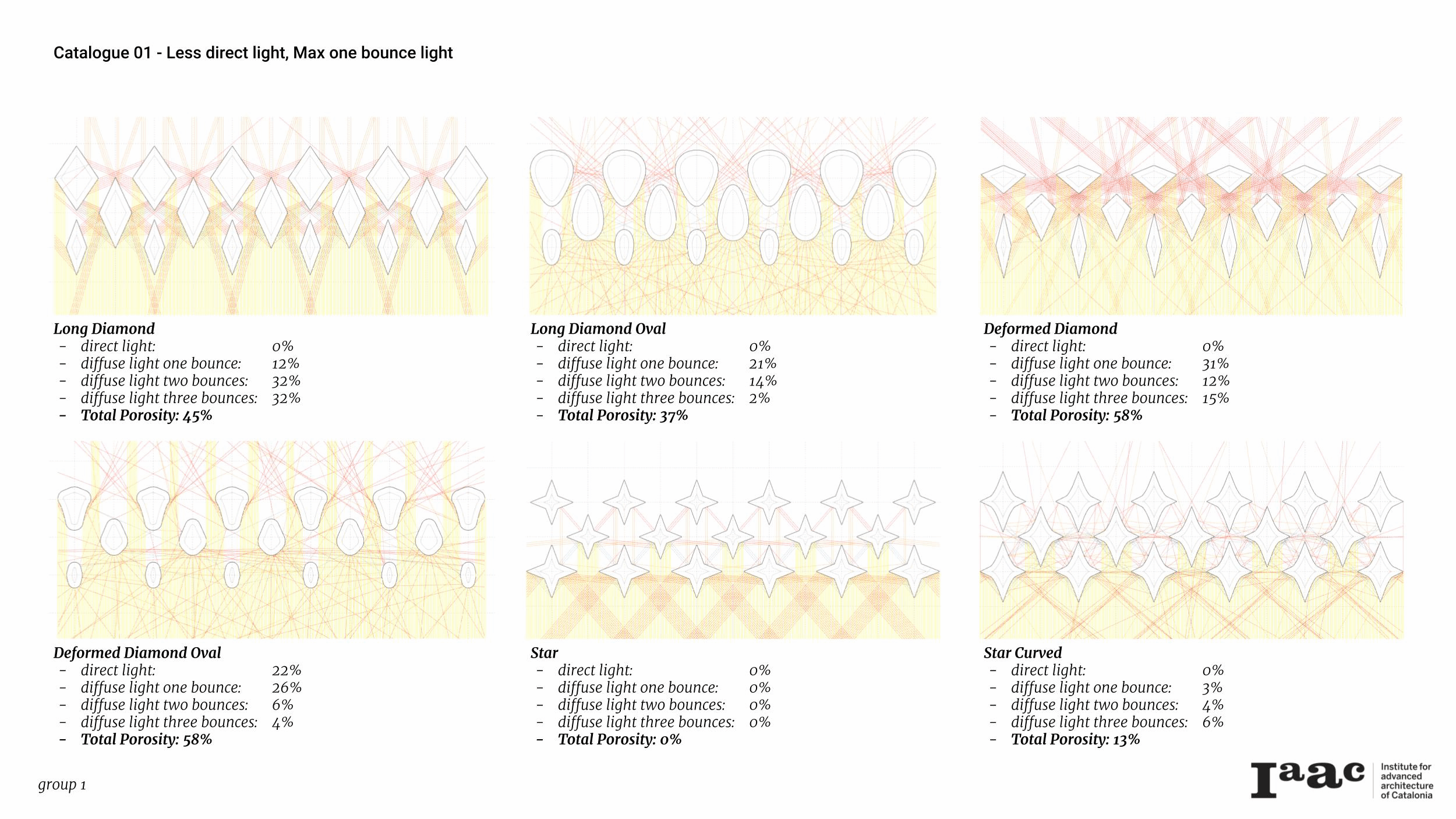
By the end of Catalog 1, we had compiled a collection of different geometries, showcasing the best wall performance. Among these designs, we have achieved remarkable results with only 0% direct light and an impressive 96% indirect light. The diagram below illustrates the process employed to design a shape that delivers these excellent outcomes
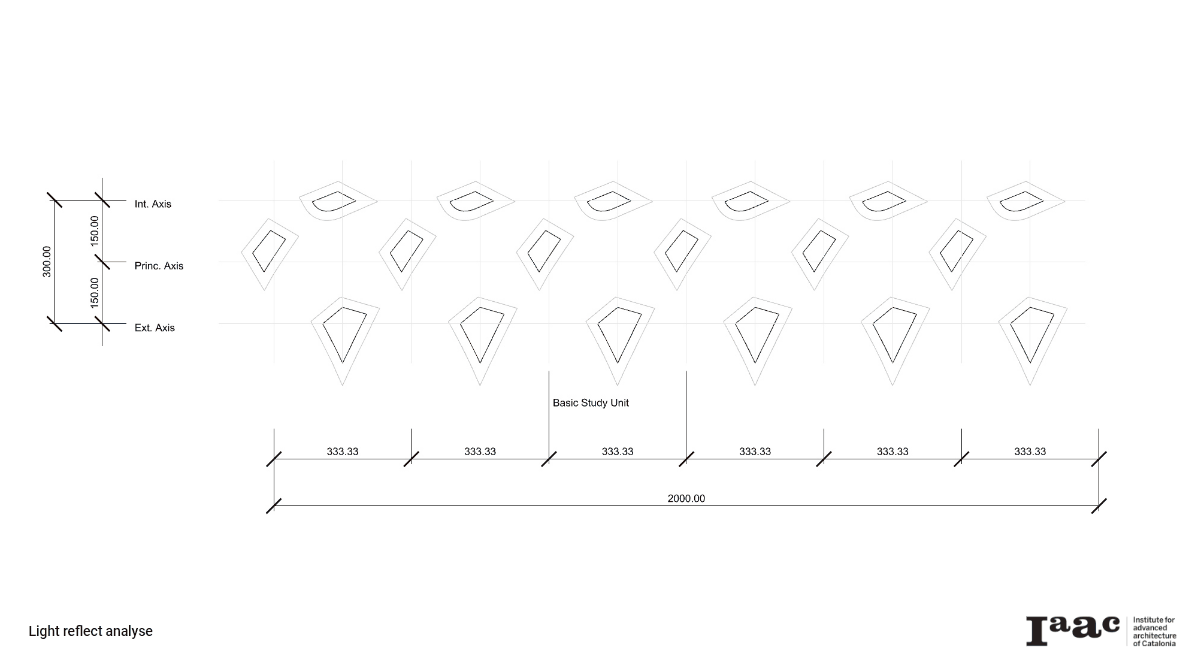
- Catalog 2 :Exploring lightsBounces in 3D – Fixed Grids and Variable geometries
In Catalog 2, our focus shifted to the exploration of light in three dimensions. Much like in Catalog 1, we continued working with fixed grids and variable geometries. Our challenge remained the same: to design 3D walls that embraced the grace of indirect light while limiting direct light.
However, when we explored 3D design, we faced challenges in moving from flat 2D shapes to three-dimensional forms. We encountered three main problems:
- Lofting: Transitioning different profile geometries from one plane to another was quite challenging, particularly in controlling seams and curvature.
- Boolean Operations: Our attempts at applying operations like unions to join shapes faced difficulties, especially when dealing with intersected 3D shapes.
- Section Intersections in 2D: Visualizing different 2D section intersections while contouring 3d geometries introduced an additional layer of complexity. This process required meticulous verifications during slicing and printing to ensure accuracy.
[Diagram image ]
In the following catalog, we showcase the collection of 3D walls created by the four student groups.

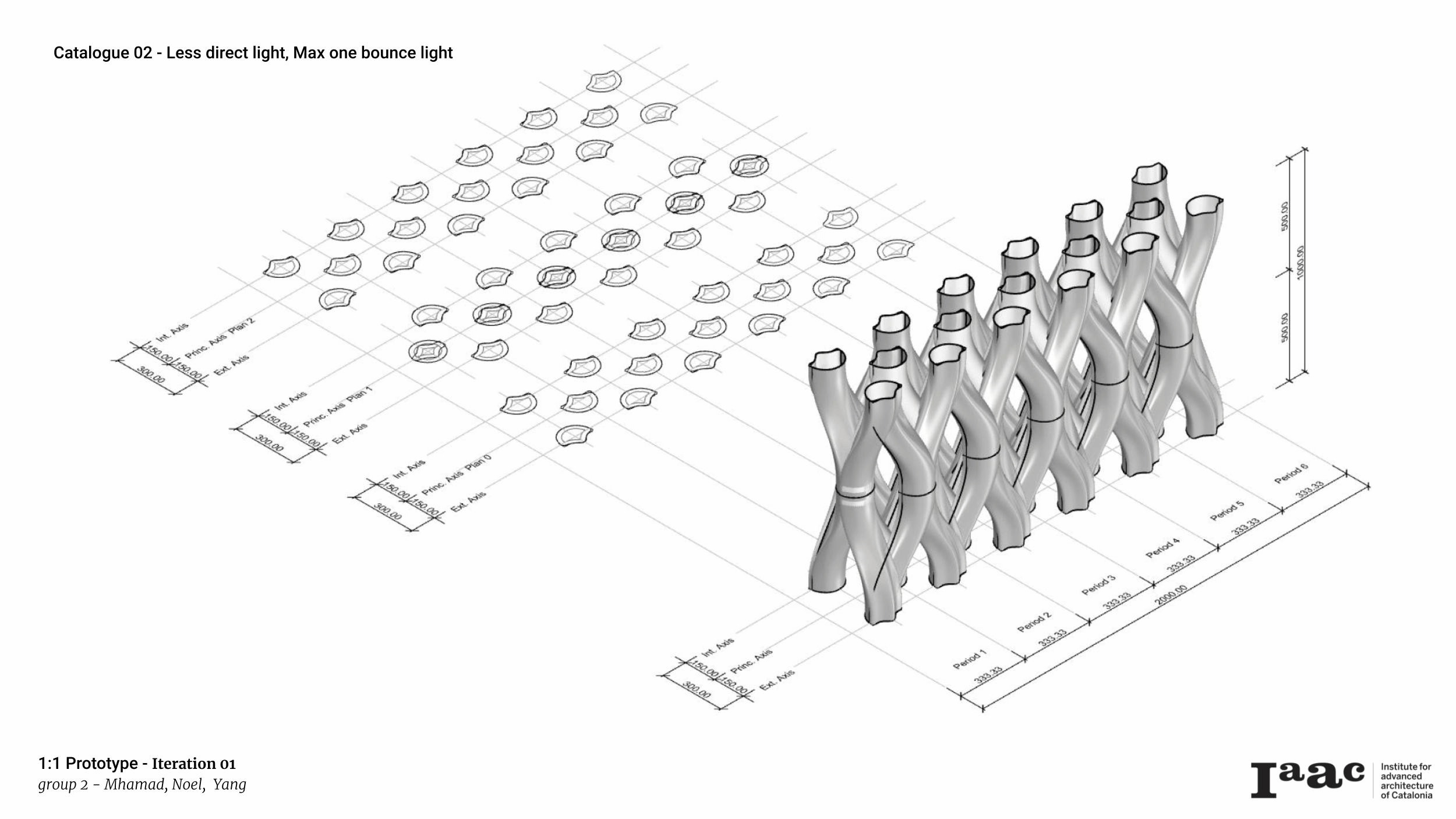
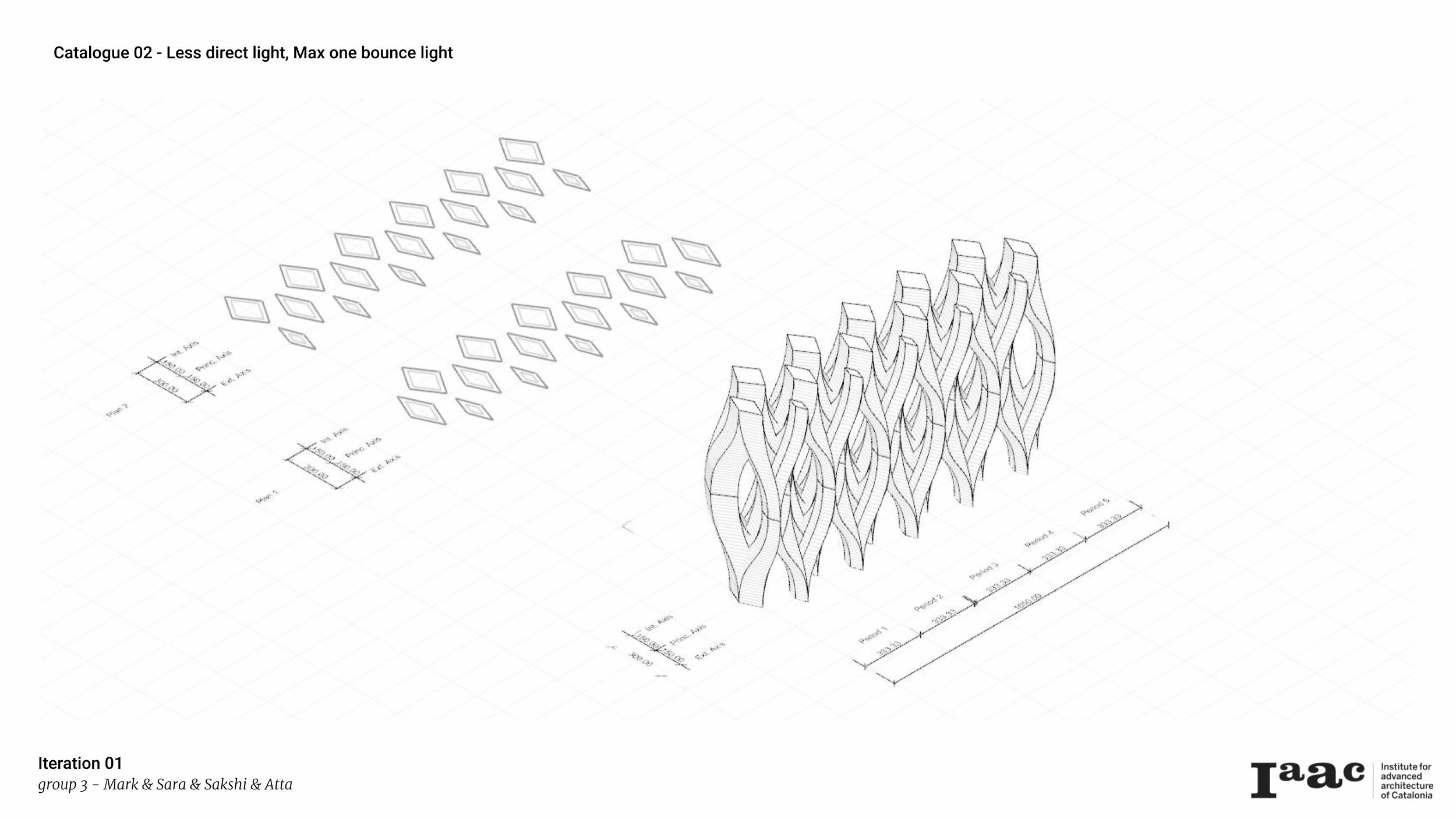
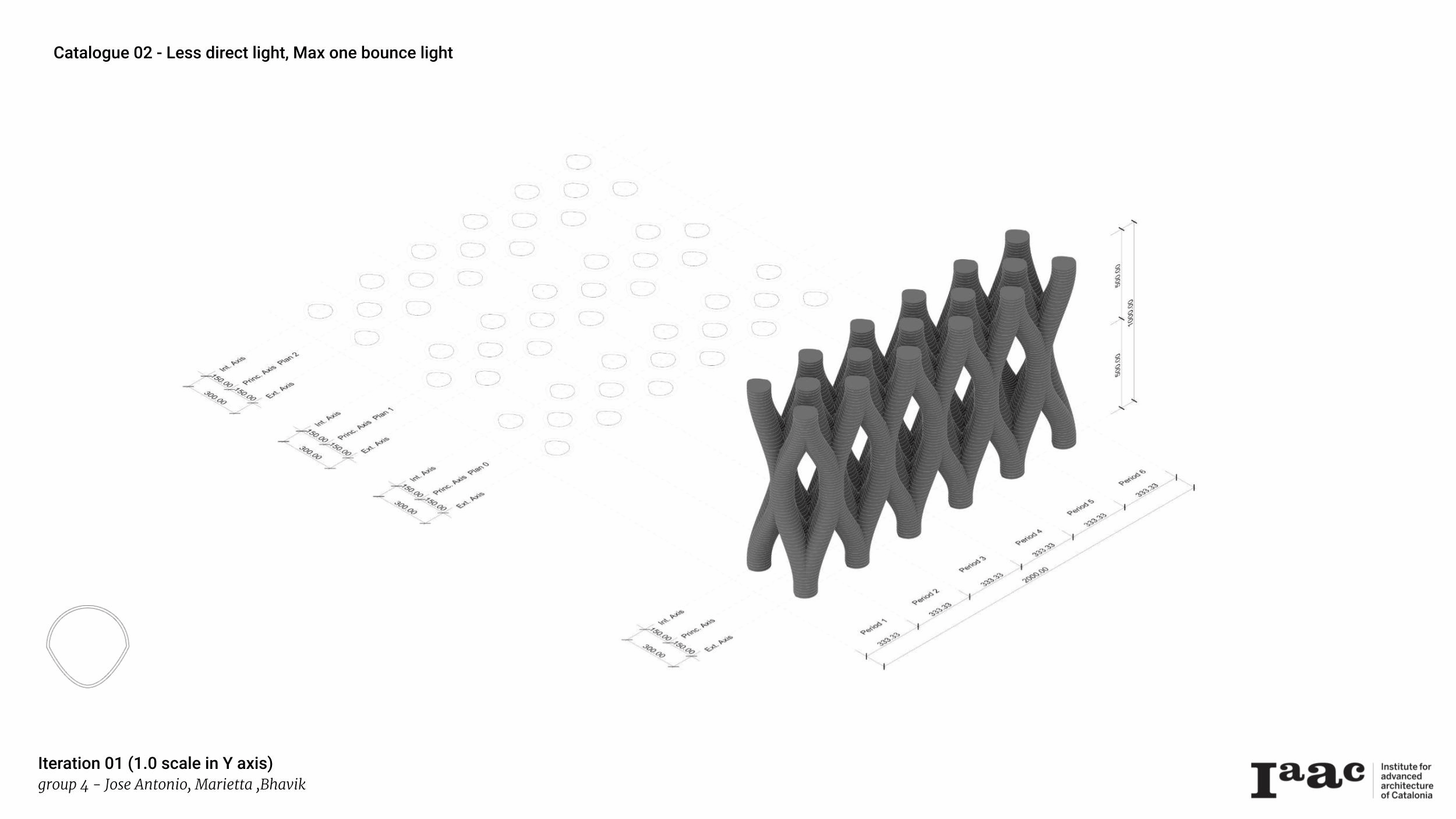
By the end of Catalog 2, we had a new collection of geometries that represented our understanding of the interplay between mass and light in a three-dimensional wall design.
In conclusion, our one-week workshop has explored the exciting possibilities of merging mass and lightness in earth-based 3D printing. it has showcased the intricacies of porosity, geometric precision, and the balance between opacity and illumination. This workshop marks just the beginning of our exploration. Earth-based 3D printing holds even more promise and creativity, where each architectural element is a canvas waiting to be shaped by the interplay of mass and light.
- Clay Print Test

